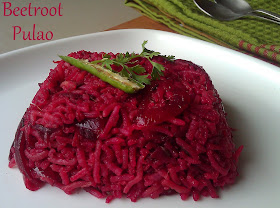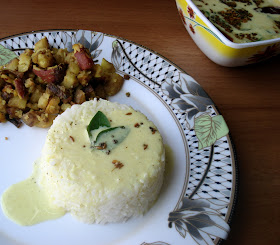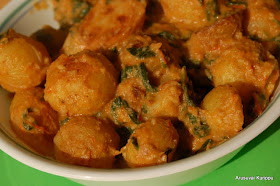EP Series comes to Palakkad
Chamayal!
Friends, I am glad to guest
host the EP Series – Herbs n Spices, which was originally started by Julie. I
thank Julie for giving me this wonderful opportunity to host this lovely event.
I have chosen my favourites – Fenugreek Leaves and Green chilli.
A little info about the chosen herb and spice
They are known by different names in India like Methi in
Hindi, Menthya in Kannada, Vendayam in Tamil, Menthulu in Telugu and Uluva in
Malayalam.
Fresh fenugreek leaves are
bitter in taste and are recognized as a powerful herb. Add these leaves to any
kind of dish like dals, curries, rice or even while making chappathis. You are
sure to love its aroma and flavour.
They are known to be very
high in iron as well as having significant levels of potassium, fiver and
calcium. Few diet experts say that the leaves are nearly healthier than the
spinach in providing an excellent dose of vitamin K. They help in stabilizing sugar
levels in the body and are a boon to the diabetic. They also help in digestion,
curing liver problems, anaemia and as an anti inflammatory.
Green chilli is an integral part of Indian cooking. I don't think even a single day, in an Indian household would go by without the use of green chillies. They
are used in almost all Indian savory dishes like curries, dals, breads and
appetizers. They are very high in Vitamin A and C.
Now to the rules:
1. The event runs from 1st to 31st July 2012.
2. The theme for this month is
"Fenugreek Leaves and Green Chillies". You can use one ingredient in
a dish or use both but that ingredient should be one of the main ingredients.
It can be anything from a starter, main
dish, snack to dessert. (Recipes which don't follow this rule will not qualify
for the event)
3. Only Vegetarian entries will
be accepted.
4. Bloggers and Non bloggers can
participate. Please send in your recipes to kaverivenkatesh@gmail.com with the
following details-
Your Name-
Blog Name-
Recipe Name-
Recipe URL-
Pic of the Dish
5. Recipe must be linked to Julie's announcement page and to my page.
6. Send in any number of entries.You can link in your
old entries too (limiting 2 per person), just add the logo and the link under
the post (2 archived posts)
7. Usage of logo is appreciated
for all entries.
There are 4 awards for the
BEST INNOVATIVE RECIPE AWARD, TOP CONTRIBUTOR AWARD,BEST HEALTHY DISH AWARD
& PARTICIPATION AWARD.
So, Folks put on your
innovative caps and think tight, do right and link in your recipes at the earliest
before 31st July,2012.
.
Best Wishes to All !!!!




















.jpg)


























